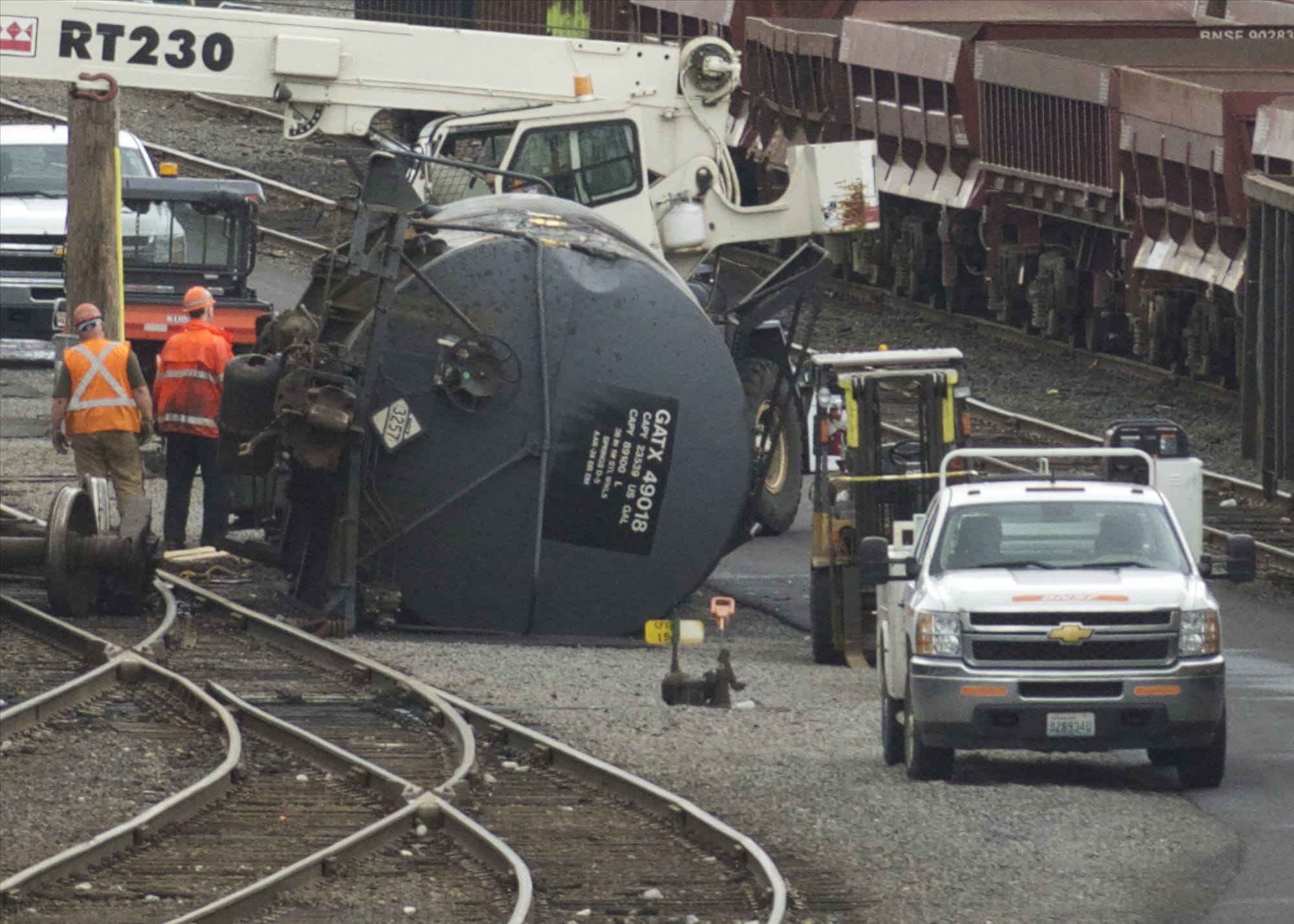Rail accidents by year in Clark County
2005: 3
2006: 4
2007: 4
2008: 5
2009: 3
2010: 4
2011: 4
2012: 0
2013: 3
2014: 3
TOTAL: 33
Out of the 33 reported rail accidents …
15 involved cars carrying hazardous material
9 damaged at least one car carrying hazardous materials
1 resulted in a spill of hazardous materials
Reported rail accidents in Clark County, 2005-2014
• Feb. 10, 2005: Track welder rocked off track.
• March 14, 2005: Collision and derailment caused by failure to apply hand brakes on cars.
• June 13, 2005: One train raked another in Vancouver yard.
• Jan. 12, 2006: Train struck a truck at gated railroad crossing.
• April 5, 2006: Derailment in Vancouver yard.
• Oct. 10, 2006: Side collision in Vancouver yard; 300 gallons of diesel released.
• Dec. 3, 2006: Derailment caused by improperly lined switch.
• Feb. 24, 2007: Sideswipe collision of cars at industrial track.
• March 26, 2007: Derailment on main line caused by equipment.
• May 28, 2007: Derailment in Vancouver yard.
• Nov. 2, 2007: Derailment in Vancouver yard caused by broken rail.
• March 29, 2008: Cars shoved into each other on industrial track.
• July 26, 2008: Derailment in Vancouver yard.
• July 28, 2008: Freight train derailment in Vancouver yard; damage totals $258,000.
• Aug. 22, 2008: Derailment on main line.
• Nov. 22, 2008: Derailment on main line caused by equipment failure.
• June 1, 2009: Collision and derailment in Vancouver yard.
• Nov. 16, 2009: Derailment in Vancouver yard.
• Dec. 10, 2009: Damaged locomotive arrives in Vancouver.
• June 27, 2010: Sideswipe collision in Vancouver yard.
• Aug. 12, 2010: Derailment in Vancouver yard.
• Aug. 31, 2010: Cars damaged on industrial track.
• Dec. 10, 2010: Derailment in Vancouver yard.
• Jan. 4, 2011: Side collision and derailment in Vancouver yard.
• April 14, 2011: Derailment in Vancouver yard.
• May 13, 2011: Derailment in Vancouver yard.
• Dec. 24, 2011: Derailment of train leaving Vancouver yard.
• Jan. 4, 2013: Single-car collision in Vancouver yard.
• Jan. 6, 2013: Derailment on industrial track.
• Dec. 20, 2013: Derailment on main line near Ridgefield caused by equipment failure.
• June 27, 2014: Raking collision and derailment of single car in Vancouver yard.
• Sept. 13, 2014: Collision in Vancouver yard.
• Dec. 9, 2014: Track and signal damage found in Vancouver yard.
Source: Federal Railroad Administration
Rail accidents happen in Clark County, and they happen regularly.
Most go unnoticed by the public.
There were 33 reported incidents in the county from 2005 through 2014, according to records kept by the Federal Railroad Administration. Nearly half of those involved cars carrying hazardous materials. Most were caused by human error, according to the reports.
The majority of the accidents involved low-speed trains in rail yards. None caused any injuries, and only one resulted in the release of hazardous material — an October 2006 collision that released 300 gallons of diesel fuel.
The sharp increase in the amount of trains hauling crude oil has cast intense scrutiny on rail safety and the risks of a relatively new, volatile cargo. Many fear even a minor mishap could turn into a major calamity; a string of fiery derailments and explosions involving crude oil have only heightened those worries.
Bruce Hunter has seen the many ways train accidents can happen. He worked for BNSF Railway for about 28 years, including about six as a track inspector. Hunter, now retired, monitored the line from Kelso to Vancouver.





